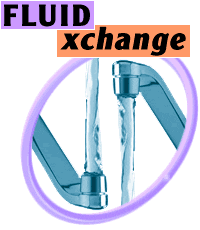Charles says he feels like a caged animal.
“Since 1996, I’ve been popping pills and watching my CD-4 count fall…. I’m kind of in limbo waiting for new drugs.”
The 49-year-old was diagnosed HIV-positive in 1989. When the protease inhibitors first came out, he started on them and immediately became very sick. His doctor advised that he go off for a while and he did.
“But when I went back on, they didn’t work,” Charles says.
Toronto family doctors who specialize in HIV and AIDS say they have a growing number of patients for whom standard antiretroviral combinations do not work. For some PWAs, the drugs never worked. Others have developed resistance.
These PWAs are eligible for what some call salvage therapy. It’s a term used primarily in the US, a catchy but ugly one, since it conjures up the image of shipwrecks and scrap-yards. There’s no standard definition of salvage therapy – the meaning shifts as the epidemic evolves. These days it means the untried combination of existing and/or experimental drugs when the standard mixes just don’t work.
Dr Colin Kovacs, who has a large HIV practice, estimates that 80 percent of his patients who’ve been on chemotherapy since the introduction of the protease inhibitors a few years ago are “doing phenomenally well.” The other 20 percent, however, “seem to be casualties of the 1980s.”
The “casualties” include those who, early on, took one and then two-drug therapies and have developed a mutated virus, he says.
“We’ve done a lot of bad things to patients [over the years]. For them, it’s a waiting game. We can’t successfully suppress the virus and it all depends on how much immune system they have now. Some of them have strong enough immune systems, but a large number of them are basically sitting on a fingernail of an immune system and if we don’t do something they are going to die.”
What bothers Kovacs is that the problem of patients becoming drug resistant was predictable. “It’s a time game… and we are not responding as appropriately as we could; we did not envision this problem appropriately and respond.”
Dr Gary Rubin, another doctor with a large HIV practice, says he spends more and more time trying to come up with drug combinations that will work for patients “so the major problem is resistance. For most patients, developing a new combination is a guess. They’ve been on these drugs, but not on these. Were they on them together? In what sequence? Why did they stop them – because of side effects or because they were ineffective?”
Charles, who is five feet 11 inches, now weighs 140lbs. He saw his CD-4 cell count fall below 50 in February. His HIV specialist told him not to put off doing anything.
“He told me not to wait until tomorrow because I likely wouldn’t be there,” Charles says. That doctor’s blunt advice helped push Charles into a clinical depression that ended less than a month ago.
Why is he still taking his drugs? “It has some benefit; I’d be in worse shape if I didn’t take them. Besides, I’d like to stay here for another year or two, so I am willing to take them despite the horrible side effects.”
But what Charles is not willing to do is try just one new experimental drug. For salvage therapy, doctors now have the option of testing out new combinations of existing drugs on their patients – sometimes up to nine different antiretrovirals at a time. If that doesn’t work, they can also try adding to the mix some experimental drugs, ones that are still in clinical trials and haven’t received approval from the federal government.
Currently, these drugs are available only to those enrolled in clinical trials. But sometimes when a drug is in the final phase of trials, pharmaceutical companies also agree to make it available through “compassionate access” for PWAs with no other options.
The best way to try out unapproved drugs on PWAs with drug resistance is in combinations of three or four new therapies, Dr Kovacs says. “If you only add one new drug, the virus will jump over the wall” and the patient will become resistant to that drug, he explains.
But getting access to three different unapproved drugs to conduct a salvage trial for PWAs with resistance is easier said than done. It means pharmaceutical companies have to cooperate with each other and release drugs at the same time for this purpose.
Kovacs has been working with the US-based Coalition For Salvage Therapy to facilitate trials of three or four new drug combinations on drug resistant PWAs.
He says the coalition succeeded in convincing the US Food And Drug Administration and the Canadian Health Protection Branch to give limited approval for this kind of early salvage trial. The coalition also got four drug companies together to the table, but one key company recently walked away, Kovacs said.
“It seems people just don’t like playing with one another… but this is what has to happen. Unless we all take responsibility, we’ll lose too many people.”
Meanwhile, Charles is popping pills and trying to prevent wasting. He is frustrated with the HIV community in general, including other PWAs.
“A lot of them on protease inhibitors are doing okay and are disinterested in going after drug companies to push for salvage trials. They feel okay now; they’re not looking down the road to when they start to fail.”

 Why you can trust Xtra
Why you can trust Xtra


